With pieces that might be 27,000 years old, the pyramid known as Gunung Padang could be evidence of an advanced civilization that predates any other in world history.
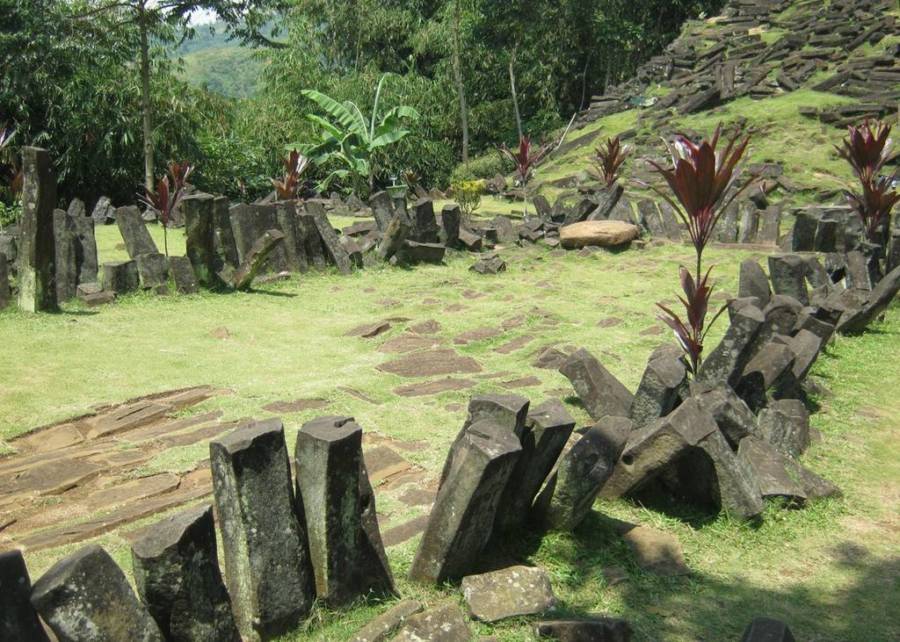
Wikimedia CommonsGunung Padang, now believed by some scientists to be the oldest pyramid in the world.
There’s an ancient pyramid hiding underneath a mountain in Indonesia. It’s called Gunung Padang, or “Mountain of Light.” And a new study suggests that this fascinating site may be the oldest pyramid in the world.
Gunung Padang has long been considered ancient and researchers have long wrestled with the question of exactly how old it may be. But it took a dedicated study of the pyramid’s many layers to determine its true age. Now, researchers believe that construction of the pyramid may have started as long as 27,000 years ago — around 22,000 years before the Egyptian pyramids.
If so, then Gunung Padang is evidence of a shockingly advanced ancient civilization, a kind of forgotten Atlantis. And it changes everything archaeologists thought they knew about the history of human civilization.
A Shocking Discovery At Gunung Padang

Wikimedia CommonsA close-up of the volcanic stones at Gunung Padang.
Located in the West Java Province of Indonesia, Gunung Padang doesn’t look like a pyramid at first glance. Rather, it looks like a large hill covered in broken columns of ancient volcanic rock, a kind of prehistoric graveyard where all the tombstones have been knocked down.
For many years, that’s all archeologists thought the site was. The Dutch colonizers who came across it in 1914 identified it as an ancient megalithic site, the remains of some stone monument prehistoric peoples had cobbled together on raised ground for a purpose lost to time.

Arie Basuki/Wikimedia CommonsGunung Padang has long been considered an ancient and holy site, but researchers weren’t quite sure what to make of it until more detailed studies of the area began in the 20th and 21st centuries.
One Dutch historian offered an evocative description of the site, describing Gunung Padang as “a succession of 4 terraces, connected by steps of rough stone, paved with rough flat stones and decorated with numerous sharp and columnar upright andesite stones. On each terrace a small mound, probably a grave, covered with stones and topped with 2 pointed stones.”
But interest in the site was limited was fairly limited until the end of the 20th century. And then, in 2010, Danny Hilman Natawidjaja arrived on the scene.

FlickrThe Gunung Padang site in the summer.
Natawidjaja, a researcher from the Indonesian Institute of Sciences, thought there was more to the site than anyone suspected — and he was going to prove it. He would later tell LiveScience, “It’s not like the surrounding topography, which is very much eroded. This looks very young. It looked artificial to us.”
Indeed, many have disagreed about what exactly Gunung Padang was. While some, like Natawidjaja, suspected that it was likely man-made, others believe that it was simply a hill on which ancient people built structures.
Between 2011 and 2015, Natawidjaja and his team of archaeologists, geologists, and geophysicists studied the site at Gunung Padang to determine the answer. To better understand the pyramid, and most importantly its age, they used techniques like core drilling, ground penetrating radars, and subsurface imaging.
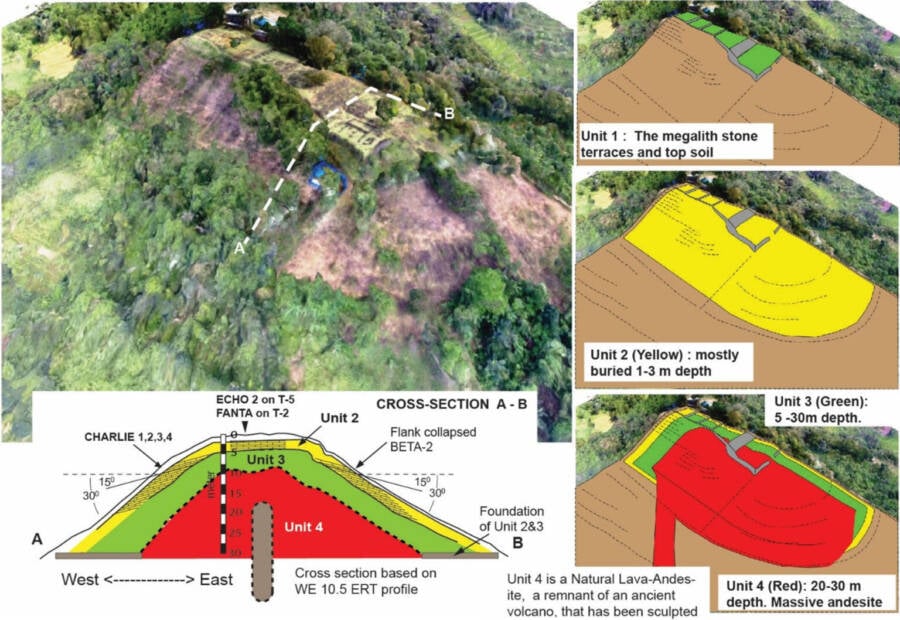
Natawidjaja et al., Archaeological Prospection, 2023Researchers used used techniques like core drilling, ground penetrating radars, and subsurface imaging to better understand the site’s age.
Their findings, recently published in the journal Archaeological Prospection, offer up a stunning conclusion. Gunung Padang appeared to have been built by human hands over tens of thousands of years. The site’s first layer may even be 27,000 years old.
That would make Gunung Padang the oldest pyramid in the world.
Pulling Back The Layers Of What May Be The Oldest Pyramid In The World
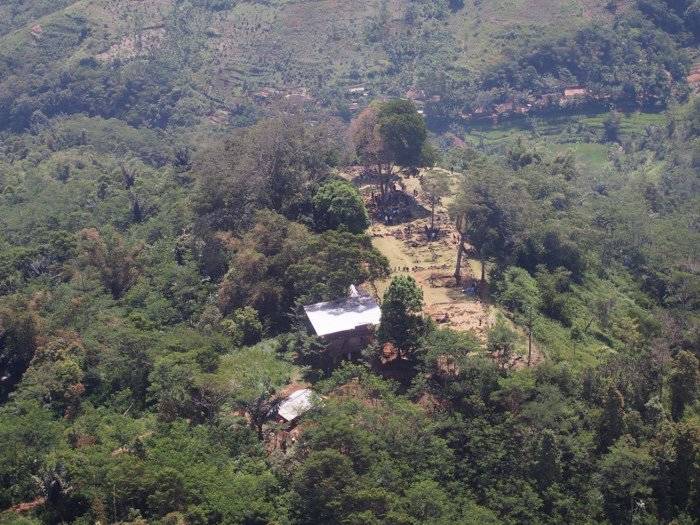
Danny Hilman Natawidjaja / ScienceAlertThe Gunung Padang archeological site.
Natawidjaja and his team found compelling evidence that Gunung Padang was built by human hands over tens of thousands of years.
They discovered that the pyramid was built in stages. The first stage began sometime in the last glacial period, between 16,000 and 27,000 years ago. Then, it seems that ancient people built the first layer of the pyramid by carving shapes into sculpted lava on the top of an extinct volcano.
Though the site appears to have been abandoned for thousands of years — “leading to significant weathering,” the researchers write — ancient people appear to have returned to Gunung Padang between between 7900 and 6100 B.C.E. This second group continued to build upon the pyramid by adding a layer of bricks and rock columns, which was afterward covered with a layer of dirt at an undetermined time.

Danny Hilman Natawidjaja / ScienceAlertA diagram of the layers within the pyramid.
Another group then returned to the pyramid between 2000 and 1100 B.C.E. to build a final layer. They added topsoil, stone terracing, and other elements to Gunung Padang, according to Phys.org.
“It is intriguing to note that during the construction of Unit 1 [the top layer], Unit 2 likely remained relatively intact and well preserved,” the researchers wrote in their study. “However, in a peculiar turn of events, Unit 2 was subsequently buried, possibly to conceal its true identity for preservation purposes. As a result, Unit 2 now lies concealed beneath Unit 1, which comprises simple superficial stone terraces or punden berundak representing the latest visible manifestation of Gunung Padang.”
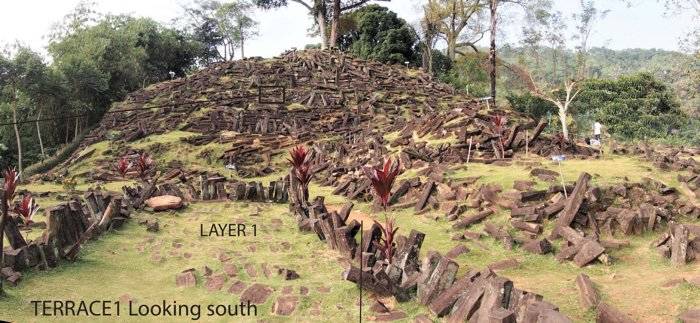
Danny Hilman Natawidjaja / ScienceAlertThe Gunung Padang site in Indonesia.
Intriguingly, the researchers also found that Gunung Padang contains deep hollow sections, some as deep as 30 meters (almost 100 feet). These may be hidden chambers, and the research team is planning to drill into them and use cameras to see what may lie inside.
Is Gunung Padang Earth’s Oldest Pyramid?
If Natawidjaja’s study is correct, then Gunung Padang didn’t just beat the Egyptian pyramids, specifically the pyramid of Djoser, by tens of thousands of years — it also clocks in ahead of the first recognized civilization in Mesopotamia. It shows evidence of a settled society 12,000 years before the agricultural revolution and is even older than Turkey’s Gobekli Tepe which is thought to be the oldest temple in the world at between 11,000 to 12,000 years old.
Indeed, the society that first built at the site of Gunung Padang even predates the last ice age, which ended in 11,500 B.C.E. — a date that archaeologists have traditionally used to mark the beginning of the great human civilizations.
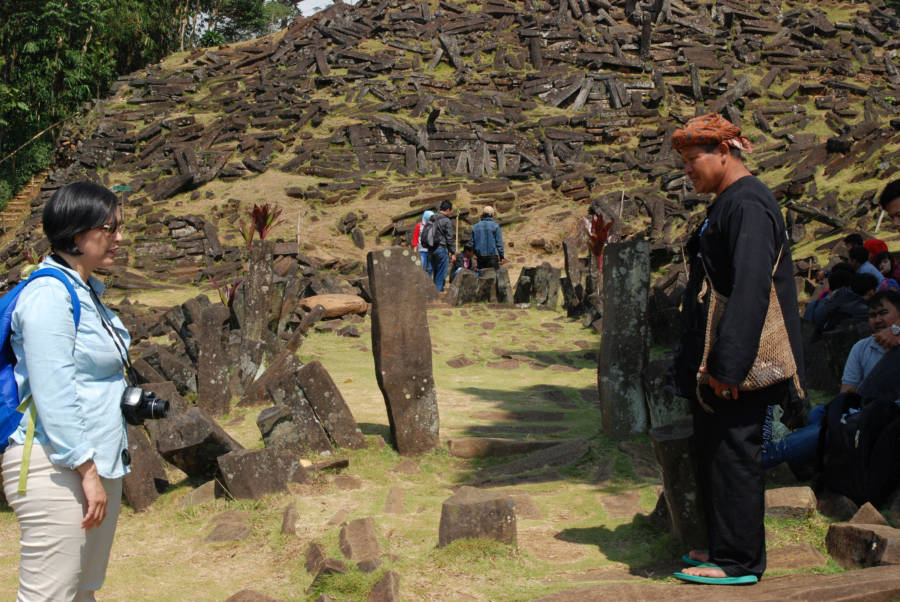
Hans Hansson / FlickrVisitors explore the Gunung Padang site.
“The builders of Unit 3 and Unit 2 at Gunung Padang must have possessed remarkable masonry capabilities, which do not align with the traditional hunter-gatherer cultures,” the researchers wrote. “Given the long and continuous occupation of Gunung Padang, it is reasonable to speculate that this site held significant importance, attracting ancient people to repeatedly occupy and modify it.”
That said, Natawidjaja’s research methods and conclusions about Gunung Padang have been challenged in the past. The team’s carbon dating procedures have fallen under scrutiny in recent years, and some believe that previous results haven’t meant what the researchers claimed they did.
Controversy Over The Age Of This Indonesian Megalith
Also raising eyebrows are the remains of what researchers believe was an ancient cement mixture used to glue Gunung Padang’s stones together. Its composition, a combination of clay, iron, and silica, suggests that iron-melting technology was in use well before the beginning of the Iron Age, drawing a picture of a society far more advanced than any other known to have existed at the time.
And several have spoken out against this conclusion. They say that the mortar isn’t necessarily man-made as similar compositions are found in nature. Vulcanologist Sutikno Bronto doesn’t even believe the structure is a pyramid: he thinks it’s the neck of a volcano near the site.

Sara Marlowe / Wikimedia CommonsAs this view of Mount Bromo illustrates, Java is a land of volcanoes — which has led some to suspect that the pyramid of Gunung Padang is really just the neck of one of the region’s many volcanoes.
There’s also the fact that nearby excavations haven’t turned up similar results. Less than 30 miles away, ancient bone tools dating back to 7,000 B.C.E. were discovered in a cave. For some, it’s hard to believe that the builders of Gunung Padang could have been advanced enough to build pyramids while their closest neighbors were still carving tools from bone.
Proponents of Natawidjaja’s conclusions have suggested the answers might lie beneath the waves of the Java Sea. Millenia ago, when sea levels were lower, the ocean bed was land — and perhaps the home of the great society the research team envisions. But the sea has since swallowed the evidence of their existence, making concrete proof difficult to find.
In short, though Natawidjaja’s and his researchers have put forward a compelling argument that Gunung Padang is the oldest pyramid in the world. This could radically change our understanding of ancient people.
After this look at Gunung Padang, possibly the oldest pyramid in the world, discover how the pyramids of Egypt were built. Then, read about Gobekli Tepe, the oldest temple on Earth.





